
In this Clickfunnels® review I’ll answer the question “What is Clickfunnels®?“, give you a look inside and show you what it does and how it operates and from there you can decide if it’s something you need for your own online business.
This isn’t a tool only for product and service creators to help them market their goods more effectively. It’s just as useful to affiliate marketers like myself and perhaps you.
Click the images below to see full size versions if you find them too small in the post.
Table of Contents
What Is Clickfunnels®?
I’ll let Clickfunnels® co-founder, Russell Brunson, answer that question 🙂
Clickfunnels® is a sales funnel creation solution that’s been around since late 2014.
It was created by Russell Brunson, one of the best marketers in the business. As with all good products, he created it initially for his own use, to make the process of creating his own sales funnels easier.
Later, he released it as an SaaS (Software as a Service) tool.
It’s used to create squeeze pages (optin pages), landing pages, lesson pages, sales funnels (a combination of different types of page), blogs, webinars and membership sites.
Clickfunnels®’ purpose is to make the creation of these web assets as easy as possible. It does this through a block-building interface – each part of a web page is a block – that makes page creation easy, even for non-techies.
Payment Plans
There are two payment plans available:
$97/mth – which gives access to the page building software.
$297/mth – which also provides an in-built autoresponder service (for sending out your emails to your subscribers) as well as some more advanced tools.
With the $97/mth plan you need to pay for a 3rd-party autoresponder service like Aweber or GetResponse to manage sending out your emails.
These services start out at about $20 per month.
If you’ve been an affiliate marketer for any length of time, you may be subscribed to one of services already.
In the interests of transparency, I’m on the $97/mth plan myself and I already had a Aweber account and I didn’t feel the need to go for the $297/mth plan.
What Are Sales Funnels?
Sales funnels are at the core of what Clickfunnels® is all about. I talked about what they are and why they’re important to any online business in my previous post.
I’d encourage you to read that post for a more in-depth look at them. But if you want the short version, they’re a way of getting people to sign up to an email list so you can then email them valuable information and reminders about the product you’re promoting. There’s a great explanation of them in this free web class.
The more someone is exposed to a given product, they more likely they are to buy as their objections are broken down and answered.
Typically, in sales funnels, 7-10 emails are sent out to subscribers.But they can have fewer or sometimes many more emails.
You still have your subscribers when the final email in your sequence is sent out. If you choose to keep sending them emails, then you can continue to promote the same product or try a different product.
The bottom line is that you have a captive audience that you can keep marketing to.
The Clickfunnels® Review…
Now that we’ve got the preamble out of the way, it’s time for the Clickfunnels® review itself.
Clickfunnels® is what is known as Software as a Service (SaaS).
That means you pay an ongoing subscription fee to use the service and you cannot buy it outright.
And, since it’s an online service, you will need an internet connection to be able to use it.
That shouldn’t be a problem today for the majority of people. Being an online service also means that you can use it from anywhere you can get online.
Building Sales Funnels
How marketers built their funnels before the arrival of Clickfunnels® was to use plugins like InstaBuilder, OptimizePress and ProfitBuilder on their WordPress sites.
These plugins let them create the various pages they needed outside of the regular WordPress posts and pages.
The problem with this method was that there were no clear interconnections between the various pages. They existed as a list of pages within the plugins and, if you’re like me and forget stuff after a while, trying to figure out how everything hangs together in a funnel months later is a real pain.
So that’s the core problem that Clickfunnels® addresses.
While this makes it very easy to create all kinds of pages with its block-builder interface, it actually organizes your sales funnels as you build them. You can go back to any page, at any time, and edit it and never have to worry about how they relate to other pages in your funnel.
When you’re building a funnel from scratch, there are two ways to go about it – using the Cookbook Builder or the Classic Funnel Builder:
Most new users will pick the Cookbook Builder which provides 22 basic templates you can use to get started with. This means you don’t have to build a funnel starting with a blank canvas:
 Once you select a basic funnel type (in the example below, I selected the Squeeze Page type), you’re presented with a screen that gives you instructions on how to build your funnel, along with a selection of free and paid templates you can use:
Once you select a basic funnel type (in the example below, I selected the Squeeze Page type), you’re presented with a screen that gives you instructions on how to build your funnel, along with a selection of free and paid templates you can use:
It’s then just a matter of clicking on the template you want and it gets loaded into your list of funnels.
The Main Dashboard
Here’s what the main Clickfunnels® dashboard looks like (I’ve blurred out some information):
This screen just gives you an overall look at your account – number of visitors, number of funnels you have, number of sales, etc.
The menu at the top opens up the rest of the system to you.
The Actionetics and Backpack features are only available to people on the $297/mth plan and, since I’m on the $97/mth plan, they’re not available to me. So for that reason, I’m not able to review those features here.
The other main menu option is Clickfunnels® which opens up the funnel building aspect of the service.
When you click the Funnels option in that menu, the Funnels screen opens:
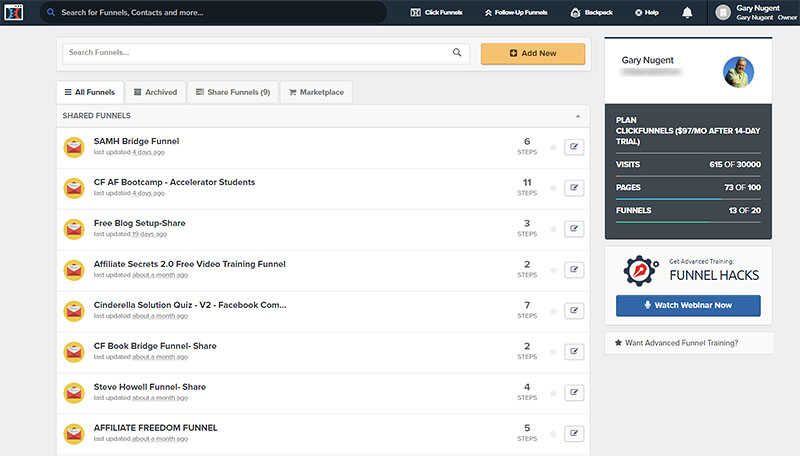
As you can see in this screenshot, I currently have 12 funnels in my account.
The most recent one I’ve completed to date is the CF AF Bootcamp.
This is actually the funnel I use to promote a free affiliate marketing training course. Since I’m in my mentor, Zach Crawford’s team, and I bought his Accelerator upsell, he gives access to a pre-built but personalised funnel he uses himself. His team build the funnel for you.
It’s what’s called a Shared Funnel – a funnel created by another Clickfunnels® user who allows you to use their funnel so you don’t have to build your own.
Using a Shared Funnel is a huge time saver as all the hard work is done for you. All you have to do is update the funnel with some of your own personal info and your own affiliate links.
You don’t have to spend time designing your funnel, doing all the copywriting for it or creating any videos used in it.
Being able to see how another user has structured their funnel is actually a great way to learn about building your own.
Here’s what the CF AF Bootcamp optin page looks like ib Clickfunnels® – this is only a partial view of it as it wouldn’t be fair to show the entire funnel:
What you can see down the left side of the screen are the various pages in your funnel. Here, 5 of several pages are listed. You can see the entire funnel in action by signing up here.
At the bottom of this Funnel Steps column, there’s an Add New Step button (not shown in the image) which lets you add another page into your funnel.
If you look over at the top right of the image, under the blue navigation bar, there are 3 tabs. The default tab is Overview – what you see in the image above.
In the Automation tab you can add new actions such as adding or removing someone from your list, adding or removing tags and sending out email notifications. There are also options to add a new email to your email sequence or set up an SMS text.
However, all the email functions relate to an email list built within Clickfunnels® itself, and that feature is only available in the $297/mth plan. It looks like the SMS feature can be used by anyone, but does require signing up with the external Twilio service and paying for that separately.
The Publishing tab is much more useful (at least on the $97/mth plan):
The options here let you publish your pages in various ways to get it additional exposure.
I’d recommend downloading the HTML versions of your pages, if only as a backup.
The Page Editor
This is where you build and edit your pages.
In the examples below, I selected the optin page to show you, as this is the public-facing page of the funnel.
In the Funnel View image (two images up), you can see that there’s an option to split test your pages. This lets you make a copy of your page and then change something on it so you can compare how it performs in comparison to your original page.
The slider which will appear between your to page variants lets you specify how frequently each variant is displayed to visitors.
Clicking the Edit Page button under a variant opens up the page editing screen:
Across the top of this screen are the various menu options.
To the right of the Clickfunnels® logo are the Back button (arrow), the Desktop View button, Mobile View button, the Apps button, Settings and Pop Up.
The editor allows you to create separate pages that are optimized for Desktop PCs and Mobile devices. Many page elements (I’ll come to these in a moment) can be the same for both but you can add/delete/tweak page elements specifically for desktop or mobile.
When new page elements are added to the system by the Clickfunnels® team, they’re available for you to add to your own pages though the Apps button. The button has nothing to do with mobile apps and its name is a bit confusing.
The Pop Up button allows you to add a popup window to your pages that can be triggered when a visitor goes to exit your page. This gives you one more chance to persuade them to sign up to your offer.
How Pages Are Constructed
We need to have a look at how pages are constructed before I can explain what the other buttons on the main menu are.
Each page is constructed of one or more sections
Inside each section you can add a number of rows. These allow you to partition sections and arrange how content will appear on the page.
Each row can have one or more columns. An example of a 2-column row would be to have a video in one column and text in the other.
Each column contains one or more page elements that are stacked vertically, not horizontally. These page elements are whatare used to add content to your page and are things like text boxes, headlines, images, videos, dividers and so on.
To stack things horizontally, you simply add a row with the number of columns you want.
This image should give you a better idea of all of this:
The light green boxes show page sections, the blue boxes show rows and columns and the orange boxes show page elements.
This optin page is made up of 1 section. There are 3 rows used on the page. The top row contains one column which contains 4 page elements – a Headline; a button; a line of text and a countdown timer.
The second row contains 2 columns – the left one holds and image and the right column contains 3 page elements (a sub-headline, a block of text and another button).
Only one item is ever outlined on the page at any one time (the image above is a composite of the various types of things that can be added to a page) and the color coding tells you what part of the page is being worked on.
The Gear icons on each part of the page allows you to change the settings for that item. That could be margins and padding, colors, font and so on.
The Pluses in circles at the bottom of each item, allow to you add another such item to the page.
As I write this, I find it’s actually quite difficult to describe all this and if I’ve not done a good job of explaining the page creation process here, please let me know in the comments below and I’ll try to come up with a better way of explaining things.
The bottom line is that in order to build pages, you don’t need to know any HTML or CSS. You simply string page elements together to make a page look how you want.
It’s a top down approach – You decide on the basic page layout, then where different page elements should appear and then you fill in the boxes.
It’s actually very easy to construct pages using this block-builder format.
It may require a bit of a shift in thinking if you’re more familiar with say the pre-5.0.0 versions of WordPress.
If you’ve used the Gutenberg Editor in Version 5.0.x (or later) of WordPress, you’ll have a much better idea of how Clickfunnels® pages are built.
Back To The Page Editor Main Menu
The Sections, Rows and Elements buttons on the menu allow you to add or manage those particular types of blocks.
The Columns menu option opens a sub menu where you can make any column on your page visible or invisible (they’re all visible by default).
The Preview option brings up a page preview.
And the Save button saves your changes. Remember to use this frequently! 🙂
The Remaining Funnel Setup Main Menu Options
The Stats button brings up a screen which tells you how your funnel pages are performing.
The Contacts button lists who has subscribed to your funnel in a set period. The default is within the Last 30 Days but you can check for the Last 7 Days, the Last 2 Months, the Last Year and All Time.
No overall count of sign-ups is provided and there’s only a Next button to see the next 10 subscribers in your Contacts list. There’s no pagination info either so you’ve no idea how many pages of contacts there are or what page you’re on. So it’s easy to get lost.
You can, at least, search for a specific contact name or email address and you can download you list of contacts.
To be fair, all this information is also stored in your autoresponder and going through your sign-ups there is probably the better option. But at least you can do quick searches within Clickfunnels® itself.
The final menu option, Settings, allows you to change certain global settings for your funnel such as its name, what group it belongs to (something you set up yourself), header and tracker code, etc:
One thing I should point out is that when you set up a funnel, it’s built on Clickfunnels®’ own servers. So each of your funnels will have a web address that’s on the Clickfunnels® domain.
But the good news is that these servers are optimized to load pages fast, in under 2 seconds.
You can, however, set things up so that your funnel pages appear to be on a domain you own. Instructions on how to set this up are provided for various domain registrars (my preferred company is Dynadot – domains and renewals are less expensive than even NameCheap – see this post about choosing a good domain registrar).
It is a bit more complex than changing your domain’s nameserver settings, but is still straightforward enough.
Using your own domain is something I’d recommend as it lets you brand your funnel pages.
There are 3 tabs on this screen…
Reset Stats will reset all your page stats to zero.
Share Funnel give you an internal web address that you can give to others if you want to share your funnel.
And Clone Funnel creates an exact replica of the funnel that you can then edit separately if you want to promote a different offer but use the same funnel structure.
Using Clickfunnels®
The block builder approach that Clickfunnels® uses took a little getting used to. I’m more used to the classic-style editor where you build your page in one large block (think the WordPress Classic Editor).
And while a classic editor – where I can tweak the HTML code myself – is great for WordPress posts, when it comes to building pages where there are lots of elements of different sizes in different positions, that becomes more problematical and time-consuming.
That’s where a block builder becomes a better solution. You don’t need to know HTML or CSS code. If you need to change anything in a block, you just move some sliders or type in a value.
The actual building of a multi-block page becomes extremely easy.
Squeeze pages, sales pages and various funnel pages are the precise kinds of pages that have this multi-block layout.
So that makes Clickfunnels® an excellent tool for creating such pages.
It’s not perfect though (no tool ever is). Sometimes it can be a bit finicky trying to select the exact page element you want to work with if there are a lot of them close together.
But that’s a minor niggle.
If you’re used to the old-style WordPress approach, it takes a bit of getting used to, to remember that each page section, row, column and element has its own individual settings controls. But a little use of Clickfunnels® makes that become second nature.
The Clickfunnels® Affiliate Program
While this review has been about Clickfunnels® as a tool, there’s also a fantastic affiliate program associated with it. These are the benefits:
There are a lot of products you can promote to entice people into signing up for Clickfunnels®.
If you want to become an affiliate, I recommend that you sign up for this free training to learn the best way to go about that.
If you want to learn more about the affiliate program and why I decided to promote it myself, check out this post.
No point in reiterating all that info here – this post is long enough as it is! 🙂
Pros & Cons
Pros
- Clickfunnels® is a tool designed to do a particular job rather than trying to be a tool for every need (like WordPress)
- Anybody, especially newbies, non-techies and everyday business owners can use the tool. You don’t need to hire a web developer to build your funnels.
- Your sales funnels can be as small or as large as you want and they’re organized by the tool itself, rather than you having to do it.
- You can have your funnel pages appear on your own domain instead of on Clickfunnels®’.
- Because Clickfunnels®’ servers are optimized, pages load fast.
- Funnels can be shared between members. So if you’re new to building funnels, you can always start by changing up someone else’s funnel.
- Shared funnels can be free or paid. Many members make their funnels freely available to other members. Some like to sell their funnels in the Clickfunnels® marketplace. If you like building funnels, this could turn into an additional income stream for you.
- There are hundreds of funnel templates to choose from if you don’t want to build a funnel from scratch.
- You can split-test your pages to see which variant performs the best. Doing this repeatedly is what turns a low or mediocre performing funnel into a high converting one.
- It’s on online service so you can use it anywhere you can get online.
- Building all kinds of pages is easy and relatively fast. Certainly, way faster than hand coding these types of pages.
- Your funnels are organized for you so you never have to figure out how things hang together if you come back to make changes months later.
- With the $297/mth plan you get access to the Actionetics and Backpack features as well as access to the in-built autoresponder so you won’t have to pay for any external services.
- Clickfunnels® has one of the best affiliate programs you can be a part of. For more information on that, read this post.
Cons
- The price. $97 per month, let alone $297 per month, will be too expensive for some. Bear in mind that Clickfunnels® is primarily a business tool and such expenses are normal for all businesses. If you’re an affiliate marketer, then you have to decide if the expense is worth it. However, you can offset the monthly fee by referring other people to the tool. There’s more info on the affiliate program here.
- It’s an online service so if you have a poor quality internet connection or can only go online infrequently, it may not be the best choice for you.
- It’s an online service so all of your funnels are stored online within Clickfunnels®. If, for some reason, the company was to go out of business, you’d lose all your funnels and they’d stop working. The saving grace is that on the Publishing tab, there is an option to download the HTML version of your pages. I’d recommend doing this as an insurance policy.
- As it’s an online service, if you cancel your subscription you lose access to your funnels and they’ll stop working. Another reason to download the page HTML files so you can use those to rebuild your funnels outside of Clickfunnels®.
- There are limitations on the $97/mth plan. Probably the most limiting one is that you can create 100 pages at most. One of my funnels uses 14 pages. While you’re allowed to create 20 funnels, I don’t see that you’ll ever be able to create that many unless each of them is 5 pages or less. Privacy Policy, Terms of Service and Disclaimer pages (all really required by Google) should be created for each funnel, eating into your page count.
- With the $97/mth plan, you will need to subscribe to a 3rd-party autoresponder service like Aweber or GetResponse.
- The block builder takes a little getting used to.
- Picking a block to work with can sometimes bet a little finicky.
Clickfunnels® Free 14-Day Trial
If you’re unsure about whether Clickfunnels® is right for you or not, you can check it out free for 14 days.
And here’s a free sales funnel you can import into your free account to get up and running immediately, so you don’t waste any of those 14 days. 🙂
Full training on installing and setting up the funnel is included.
You can also download Russell Brunson’s Funnel Hacker’s Cookbook for free, which contains his top 22 sales funnels so you can see how they’re constructed and structured.
My Bonus Package
I believe Clickfunnels® is such a great tool that I’ve put together my biggest-ever bonus package for it. You get 50 bonuses worth $12,000 if you become a paying subscriber. You can still test-drive Clickfunnels® free for 14 days via my bonus page:
Conclusion
Clickfunnels® is an excellent tool for building marketing pages of all kinds.
It’s been built by one of the best marketers in the business – Russell Brunson. He took Clickfunnels® from making zero to $100,000,000+ a year in 5 short years. Clickfunnels® is a tool he built for himself originally but then later released it to the world.
The tool is constantly being updated and new Shared Funnels become available, probably daily.
Like any new tool, there is a bit of a learning curve to using it. But it’s not a steep one. A pleasant change where marketing tools are concerned.
There’s a fantastic affiliate program associated with it and if that appeals to you more than using the tool itself, you can become an affiliate for free and start building a sustainable passive income. I’ll even throw in a few bonuses if you become an affiliate through this link.
If you’d like to know why I became a Clickfunnels® affiliate myself, you can check out my reasons here.
It’s definitely a tool I recommend to any marketer or business. Using sales funnels will help you expose your products, services and offers multiple times to your prospects rather than just once.
You’re building an email list at the same time so even if a prospect doesn’t take up your offer immediately, you can continue marketing to them. Send them coupon codes, discounts, special or exclusive offers, and send valuable information so they don’t feel like they’re being pitched to in every email.
An email list is an asset that any online business should have. It’s about the only asset you have full control over and you’re not subject to the whims of Google, Facebook or other such entities and the changes they make to their systems.
If you’re still not convinced about the value of an email list, you should read this post.
I hope my Clickfunnels® review has answered any questions you have about the tool and its usefulness. If you still have questions or feel there’s something I should have included in this review, please let me know in the comments below.
Here’s some free affiliate marketing training that will get you started on the right foot if you’re interested in building a business online…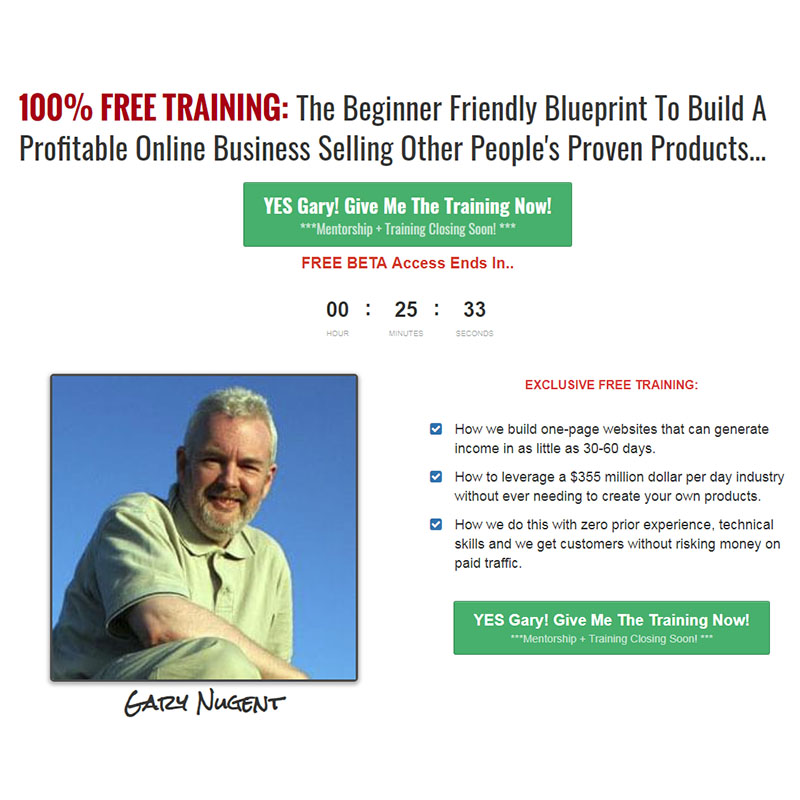
To close, here’s Clickfunnels® founder Russell Brunson talking about the company’s success in 2018:
And here’s a graphic that shows you how Clickfunnels® compares to other similar services (you’ll need to click on the image to see it full-size):
Free Resources
100% FREE TRAINING: The 3 Step System To Kill Your 9-5 Job Selling Other People’s Proven Products
Zach Crawford shows you how to build an online business selling other people’s proven products with simple websites and without paying for traffic.
Access It Here
Clickfunnels® Affiliate Bootcamp
This is more of an interview series with a number of internet marketers in various markets. They were asked what they would do if they only had 100 days to turn their internet marketing hobby into a full-time career so that they could feed, clothe and shelter their families. These interviews were their strategies and insights using what they now know.
Access It Here
Secret Funnel Strategy Webinar
Watch Russell Brunson’s infamous 10X presentation where he talks about how he uncovered a new Secret Funnel Strategy that almost nobody knows about…(one that can take ANY business from ‘Startup’ To ‘$1,000,000’ in a short period of time…)
Access It Here
The Ladyboss Webinar
If you’re looking to build a business online, but you feel like you’re starting out at total SQUARE ONE…Check out this training by Kaelin Poulin (A.K.A. LadyBoss). She and her husband have built a multi-million dollar online EMPIRE by helping women to lose weight and love their bodies.
Access It Here
Funnel Builder Secrets Webinar
In this new webinar, Russell Brunson talks about what he and his team have learned after building 2,039,482 Funnels…and 70,728 Split Tests (New Research)
Access It Here
Funnel Fridays
Each Friday, Russel Brunson and Jim Edwards pick ONE Lucky Winner, and in just 30 minutes, try to write your copy, build your funnel, and help you get it launched…For FREE!
Access It Here
Clickfunnels® 14-Day FREE Trial
Clickfunnels® was built with you…the entrepreneur, the business owner, the course creator, the speaker, the expert…in mind. Because we know that you need just 2 things to ramp your business FAST: 1) Collect Leads; 2) Generate Sales. And that’s exactly what Clickfunnels® helps you do best. Pure and simple.
Access It Here
FREE Expert Secrets Book
What if people would actually pay you for your advice? Find your message, build a tribe and change the world. Expert Secrets is the map that will allow you to turn your specialized knowledge, talents and abilities into a business that will work for you! (Physical book).
Get It Here
FREE DotCom Secrets Book
Looking to increase your conversions by tweaking a headline? DON’T! Read this book instead and you’ll discover how to beat any tweak or split test you could ever hope to make yourself. There’s NO hidden “continuity program” (physical book – a bestseller on Amazon).
Get It Here
FREE Copywriting Secrets Book
This is not a book about “how to get rich”… but, if you do what it says, you will definitely make more money than you’re making right now in your existing business. This IS a book about how everyone can use the power of words to get more clicks, make more sales, and get more subscribers… no matter what you sell or who you sell it to! If you’ve ever been frustrated by lack of sales, lack of clicks, or lack of subscribers… this is the book you’ve been looking for! (Physical Book)
Get It Here
FREE Funnel Hackers Cookbook
Russell Brunson reveals his Top 22 sales funnels (free PDF)
Get It Here
FREE Marketing Secrets Blackbook
Learn the 99 marketing secrets that master marketer Russell Brunson used to take his Clickfunnels® company From ZERO To over $100,000,000 in sales in just 3 years (free PDF).
Get It Here
Lead Funnels Swipe File
Get 106 actual case studies of the world’s most successful lead funnels. This is quite possibly the definitive guide to lead generation (not free but it’s only $7. A PDF book)
Get It Here









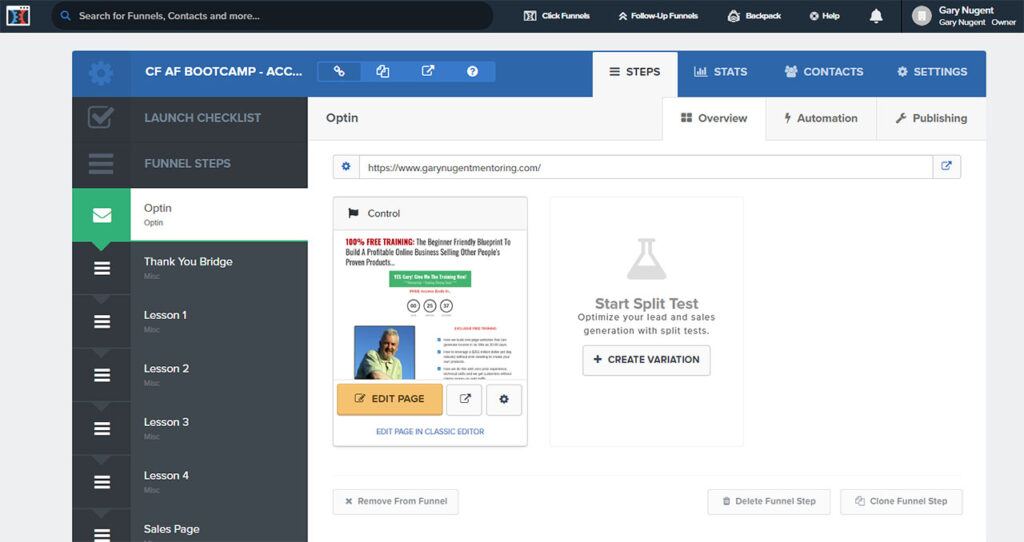

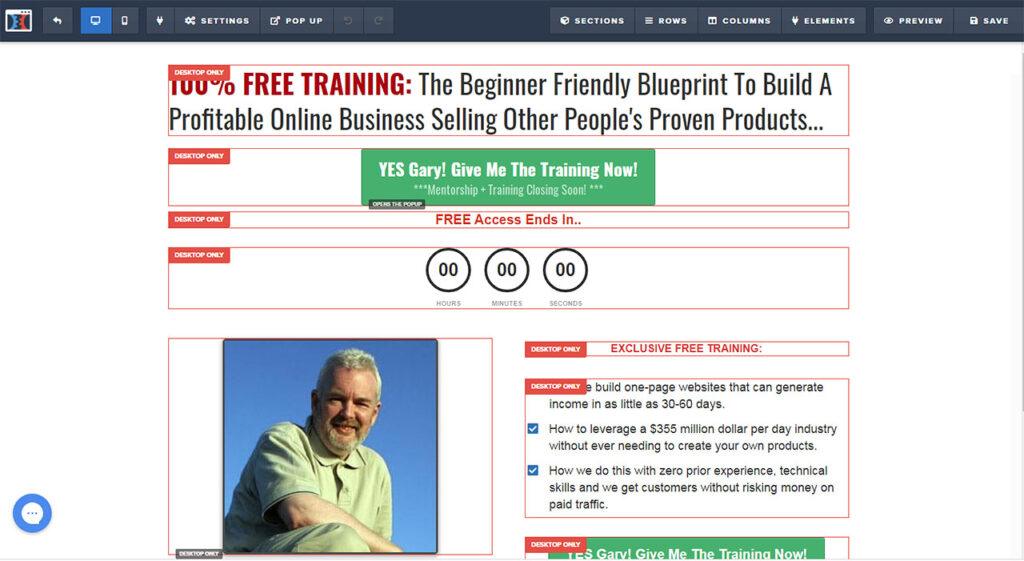
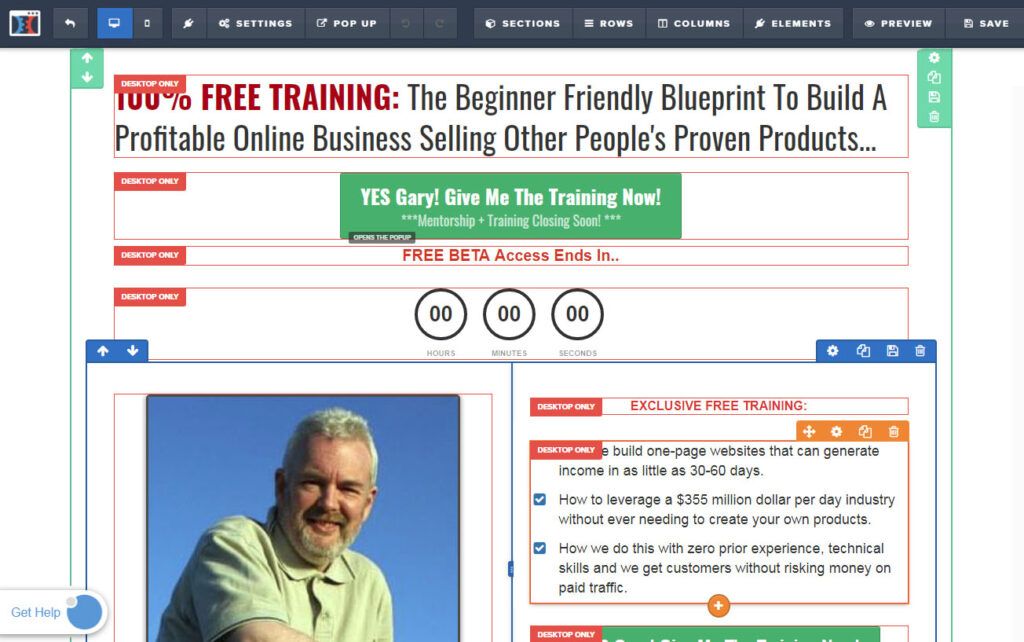

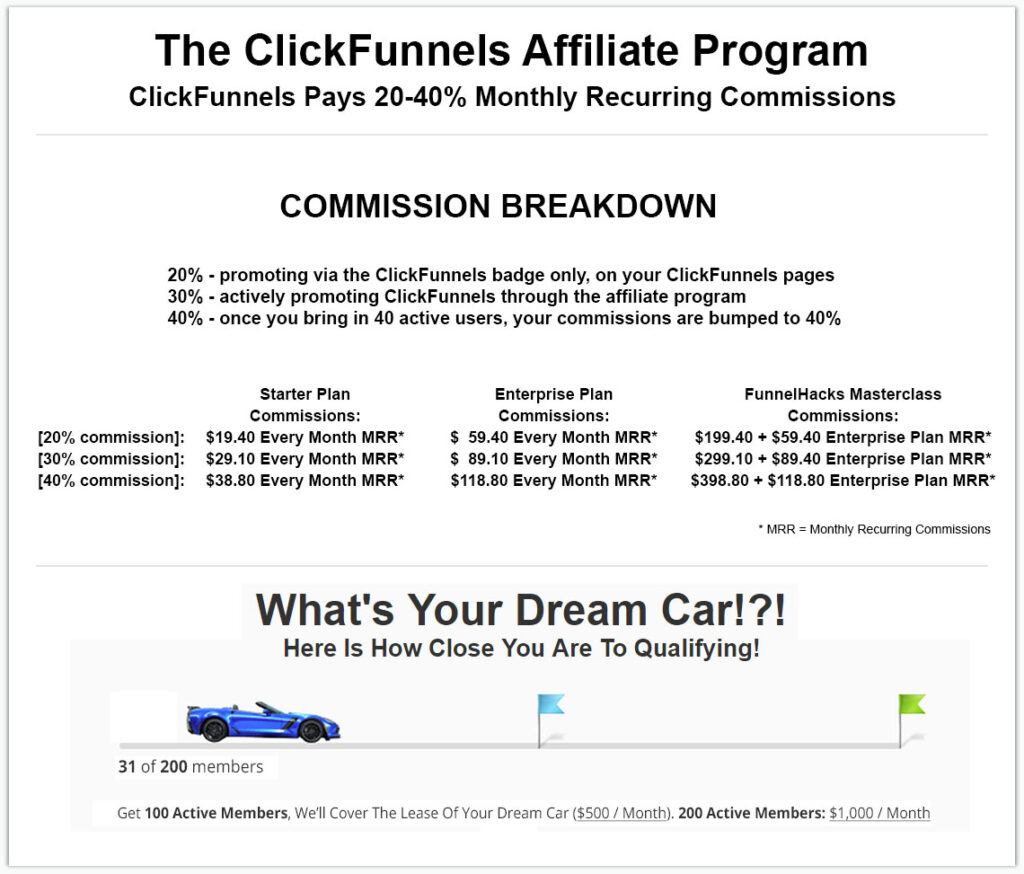
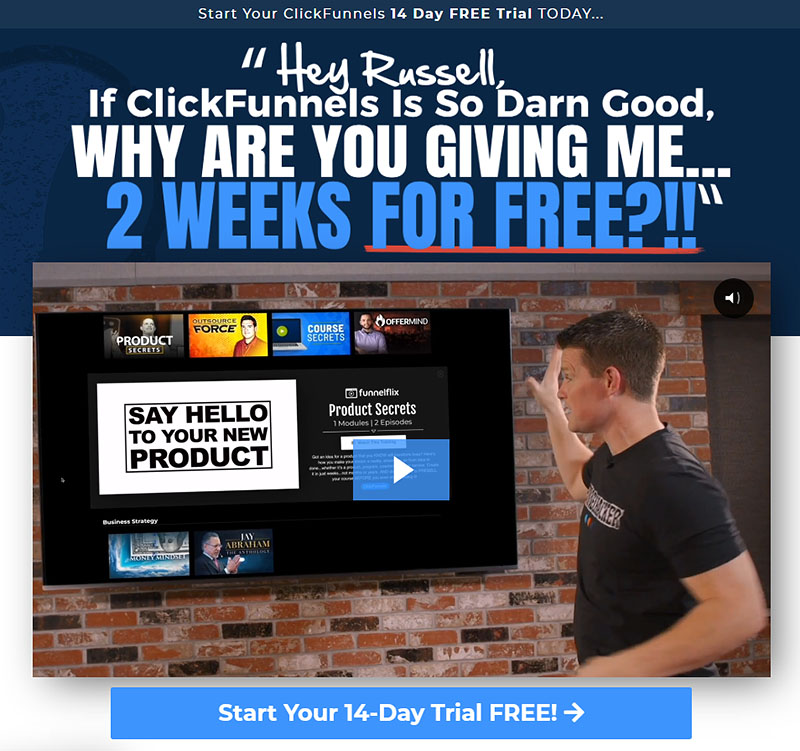


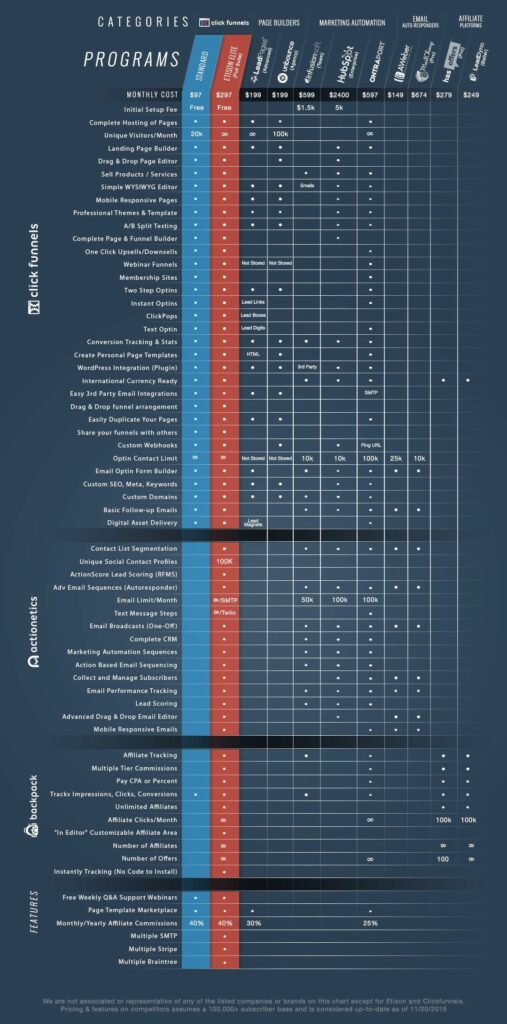
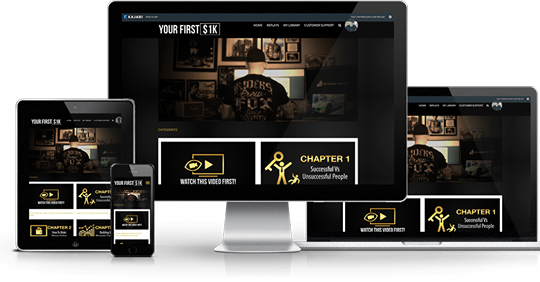
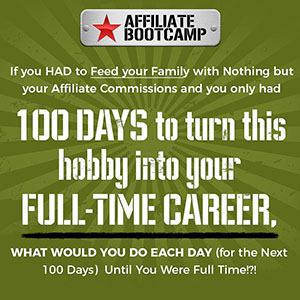



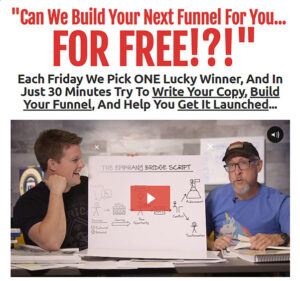
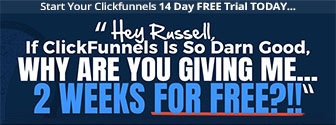
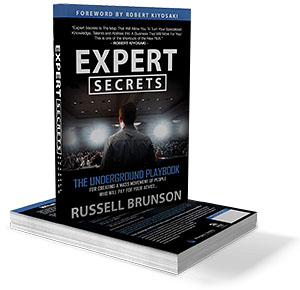
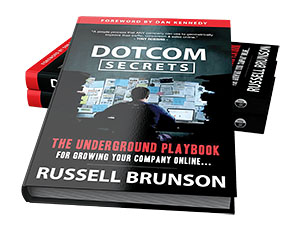



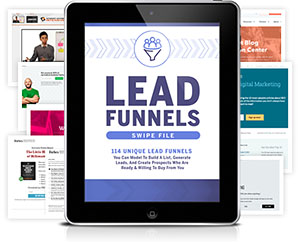

I have seen and heard of ClickFunnels over the years I have been online, but I really never researched how useful and valuable it would be for my business, I do agree with you this tool would be on the expensive side for most people just starting a business online. What I am interested in knowing from you is would you invest the price for this tool for your own business?
Jeff
Hi Jeff, I do use Clickfunnels myself. I’m on the $97/mth plan. The screenshots in my post are from my own Clickfunnels dashboard. The $297/mth plan is too expensive for me as a lone businessman.
I really don’t need the autoresponder service that comes with the more expensive plan as I’ve been with Aweber for years. If my online business grows to the point where I need the extra features in the Clickfunnels Pro plan, then I might consider upgrading to it.
Yes, Clickfunnels is relatively expensive even at $97/mth. But you’ll find plenty of programs and membership sites online that charge a similar fee. So it’s not a really high-end subscription fee, at least in the internet marketing arena. The $297/mth option is though.
I agree that it’s probably too big an expense for someone starting out, especially as they may not have enough time to use the service given all the other stuff they have to learn to become successful marketers.
I listed a number of WordPress plugins and low-priced services that people can start out with in my How To Create Squeeze Pages, Landing Pages And Sales Funnels post.
And there are some lower-priced sales funnel software services available that I talked about in my 3 Low-Cost Sales Funnel Software Solutions post.
How To Successfully Build A Sales Funnel also gives some pointers on how to build sales funnels that can be used with whatever system you like.
Anyone thinking of building a sales funnel, especially if the concept is new to you, should consider signing up for the One Funnel Away Challenge. This is a $100 course run by Clickfunnels that shows what funnels are all about, how they’re constructed and why they should be used by online businesses. The course runs over 30 days.
All the best,
Gary.
Wow-what a great article, have bookmarked it for reference. This is the most extensive post I have seen on ClickFunnels. Being new to this industry, the $97 per month makes me a little hesitant to jump in. Are there any other providers with similar Click Funnel apps that would be worth trying first?
Hi Steve, checkout my How To Create Squeeze Pages, Landing Pages And Sales Funnels post for WordPress plugins that can build landing/squeeze pages and sales funnels, as well as some low-priced online software services that can build basic pages.
If you’re looking for a true sales funnel software system, then I list three Clickfunnels alternatives in my 3 Low-Cost Sales Funnel Software Solutions post.
You could also take a look at LeadPages. Their Standard Plan is $37/mth so about a third of the price of Clickfunnels. This is more of a page builder / site builder service than a sales funnel software service but you could build funnels with it with a little self-imposed organization.
They do have a lower-priced $19/mth plan but that’s only for building a website, not specific pages like squeeze pages or landing pages.
Builderall is another option. Again, this is more of a page builder & site builder service than a sales funnel builder. They do seem to have plans to introduce a dedicated funnel builder service in the near future. But, with some self-organization, you could build funnels with it as it stands.
Several plans are on offer from Free (not much use) to “Builder” for $19.90/mth which allows you collect 100 subscribers (very limiting) to “Marketer” at $29.90/mth that lets you collect up to 5,000 subscribers. That’s the plan you should look at.
After that, you can scale up to the “Essential” ($49.90/mth) and “Premium” ($69.90/mth) plans as needed, which provide for larger numbers of subscribers and give access to more tools.
Whatever option you decide to go with, you want one that serves pages pretty instantly and has great customer support.
If you’re self-hosting your landing pages through a WordPress plugin, the performance of your blog will dictate how fast your squeeze and landing pages load. If you’ve a slow blog, you’ll have slow pages and visitors won’t wait around for them to load.
If your pages are hosted by the funnel builder / page builder service, then your pages will load fast but you’ll need to keep your subscription active for your pages to remain online.
Hope that helps,
Gary.